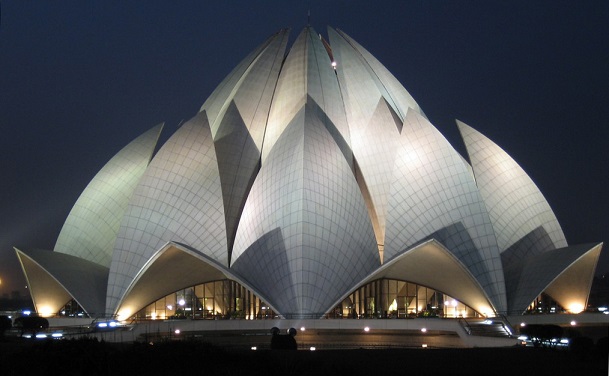Any trip to Delhi is not complete without a visit to the magnificent Lotus Temple. The Lotus Temple, opened to the public in December1986 and built of pure white marble from Greece’s Penteli mountain, is a Bahá’ House of Worship where people of all faiths come to pray. The shape and form of this temple are what make it so incredibly unique and awe-inspiring.
Notable for its flower-like shape and very reminiscent of the Sydney Opera House, the Lotus Temple (also known as Kamal Mandir) in Delhi is an unparalleled architectural marvel and one of the National Capital’s major tourist attractions. It is shaped like a spectacular lotus with white petals and attracts a large number of visitors all year. Unlike most other places of worship, this temple, also known as the Bahai House of Worship, does not allow ritualistic ceremonies and has no set pattern of worship. This glorious symbol of unity must feature on your itinerary when planning a trip to Delhi.
Interested in knowing more? Here’s everything you need to know about Delhi’s Lotus Temple, including its history, architecture, timing, and other details.
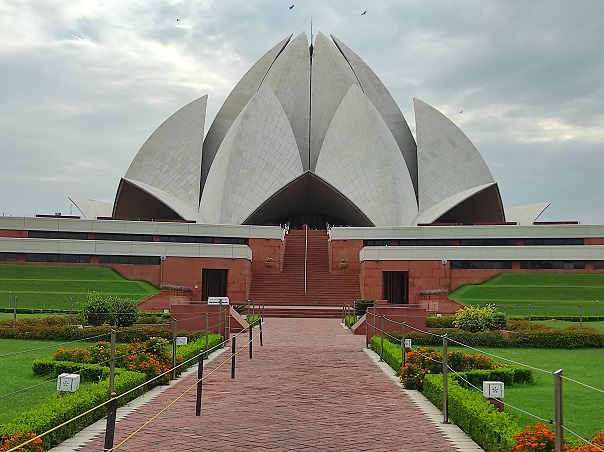
Do Read: Bodh Gaya travel: A self-enlighening journey into the land of Buddha
Post Contents
A brief history of Lotus Temple
When discussing the historical background of a tourist attraction, it is critical to understand the religious connotation associated with it. The Lotus Temple in Delhi is a major place of worship for the Baha’i Faith. Ardishir Rustampur of Hyderabad of Sindh in Pakistan, was a generous man who gave his entire life savings to the development of the Lotus Temple in New Delhi.
Despite the fact that his donation was made in 1953, the international governing body of this religious community did not begin the construction of this temple until 1976. The reason for this delay is lost to history. The Lotus Temple in Delhi is still an important place of worship for the Baha’i Faith.
Canada based Iranian architect fariborz sahba was hired to design the temple who oversaw construction of the monument. The construction began in 1980 and it took six years to complete. The matchless Lotus Temple was dedicated in December 1986 in the presence of 8000 Bahas from 107 countries including 4000 from 22 Indian states. The temple opened to the public on January 1st, 1987 and over 10,000 people visited on that first day.
The monument was highly acclaimed and it won several architectural awards shortly after its completion, including the Institution of Structural Engineers’ award for excellence in religious art and architecture and the GlobArt Academy 2000 award.
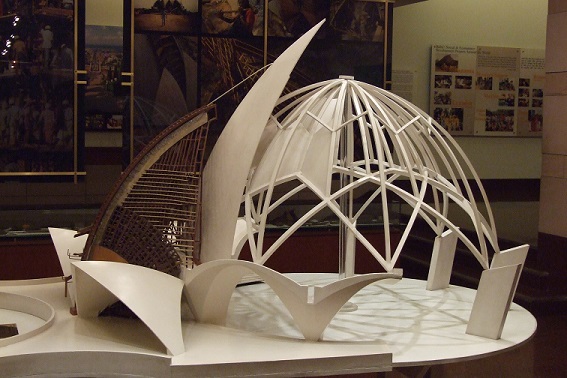
Wiki-uk/Wikimedia Commons
Lotus Temple Architecture
This House of Worship or Lotus Temple takes the shape of a lotus, a flower revered by most Indians. It is intended to reflect the simplicity, clarity, and freshness of the Baha’i Faith while also serving as a symbol of unity of mankind and religions.
Fariborz Sahba, the architect, has attempted to make this building familiar and acceptable to the Indian people without imitating any of India’s existing temple architecture styles.. The basic concept of the design is that two fundamental elements – light and water – have been used as ornamentation in place of the statues and carvings typically found in Indian temples.
The structure is made up of three ranks of nine petals each, springing from a podium that elevates the building above the surrounding plain. The first two ranks curve inward to embrace the inner dome, while the third layer curves outward to form canopies over the nine entrances.
The double-layered interior dome, modelled after the innermost portion of the lotus, is made up of 54 ribs with concrete shells in between. The central hall has a diameter of 34 metres and a height of 33.6 metres above the podium.
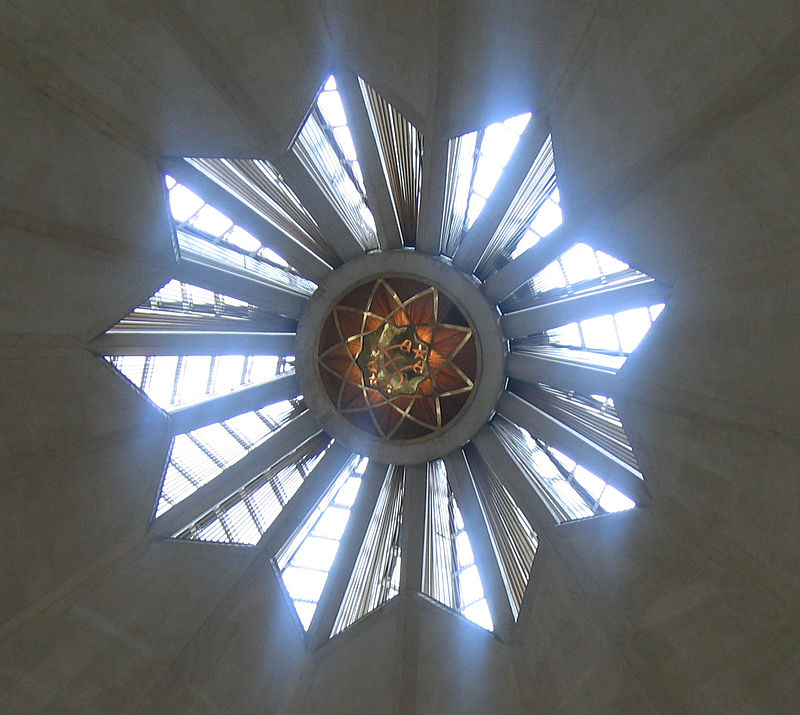
It is surrounded by nine arches, which serve as the main support for the superstructure. The hall, which seats 2,200 people, has no idols, photographs or priests. Apart from the main hall, the complex includes an ancillary block with a reception centre, a library, and an administrative office.
The entire superstructure is designed to act as a series of skylights, with glazing at the apex of the inner petals, beneath the outer petals, and on the external side of the entrance petals. Light enters the central hall in the same way that it passes through the lotus flower.
Nine reflecting pools surround the building, their shapes resembling lotus leaves. External lighting is arranged in such a way that the lotus structure appears to float on water. The structure incorporates efficient ventilation and cooling techniques. Fresh air, cooled as it passes over the fountains and pools, is drawn in through openings in the basement up into the central hall and expelled through a vent at the top of the structure.
The reinforced-concrete petals are clad in white marble panels that are tailored to fit the surface profiles and geometric patterns of the structure. The interior floors are also white marble, with bush-hammered concrete on the insides of the petals. The podium’s walkways and stairs are made of local red sandstone.
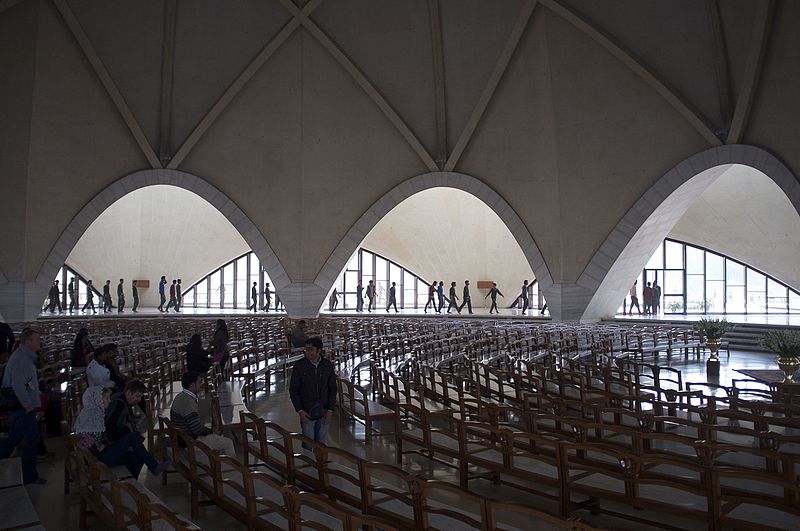
Must Read: JIranga Monastery: The Little Tibet of Odisha
Lotus Temple Worship
According to the Baha’ i Faith, a Baha’i House of Worship should be a place where people of all faiths can gather, reflect, and worship. Anyone, irrespective of religious background, gender, or other distinctions, is welcome to enter the Lotus Temple, as is true of all Baha’i houses of worship.
Sacred writings of other religions, as well as the Baha’i faith, can be read and/or chanted in any language. Nonscriptural texts, on the other hand, are prohibited, as are sermons or lectures, and fund-raising. Choirs can sing musical renditions of readings and prayers, but no musical instruments are permitted inside. Worship services have no set pattern, and ritualistic ceremonies are not permitted.
The temple is a “silent teacher” of the Bahá’í faith. During my recent visit to Lotus Temple I happened to be in the temple premise at around 5PM which is one of scheduled timing of prayer in the central hall. I observed the prayer session which lasted barely 15 minutes. The visitors were asked to mantain silence and not leave the hall during the prayer.
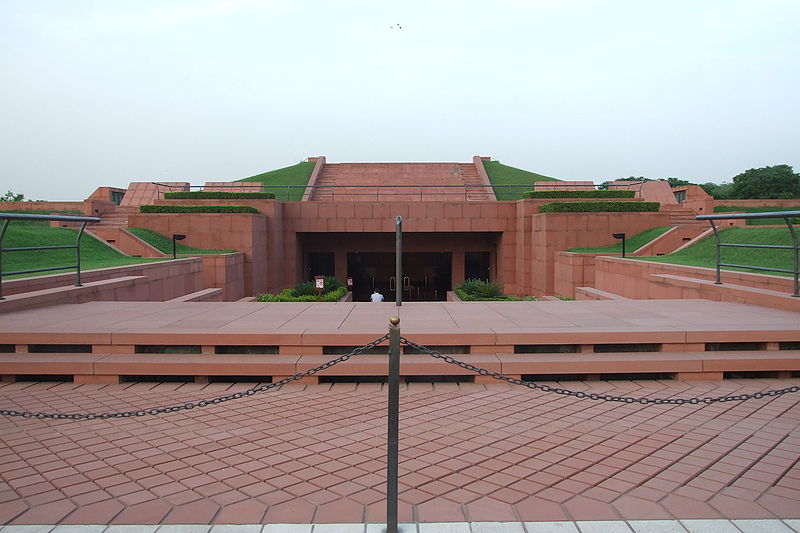
The Information Centre at Lotus Temple
Those interested in the Baha’i faith and the Lotus Temple can learn a lot from the extensive Information Center’s educational exhibits. The temple’s architect created this building, which opened in 2003, specifically to answer the many questions visitors have. It’s similar to a museum, and it’s worthwhile to spend some time there to gain a better understanding of the religion. In addition to the photos and text on display, informative short films are shown every 20-30 minutes. You can stop by here on the way back to the parking lot.
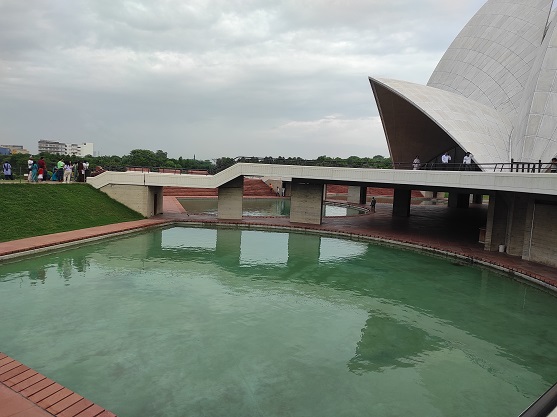
Do Read: Sanchi Stupa: All you need to know about this Buddhist treasure
Some interesting facts about Lotus Temple
- With around 4.5 million visitors per year, it is one of the most visited structures in India, surpassing even Taj Mahal, according to a 2003 article in OneCountry, a publication of the US Bahá community,.
- In India, the temple is featured on a Rs 6.50 postage stamp.
- Fariborz Sahba chose the lotus symbol because it is a common symbolism in Hinduism, Jainism, Buddhism, and Islam.
- It is the first temple in the national capital to use solar power.
- According to Guinness World Records,2001 “the most visited religious building in the world” in 2001.
- Lotus Temple, also known as a Bahai House of Worship, is the only one in Delhi, India, with the other six of the seven Bahai Houses of Worship located in different parts of the world, namely Sidney, Australia; Panama City, Panama; Apia, Western Samoa; Kampala, Uganda; Frankfurt, Germany; and Wilmett, USA.
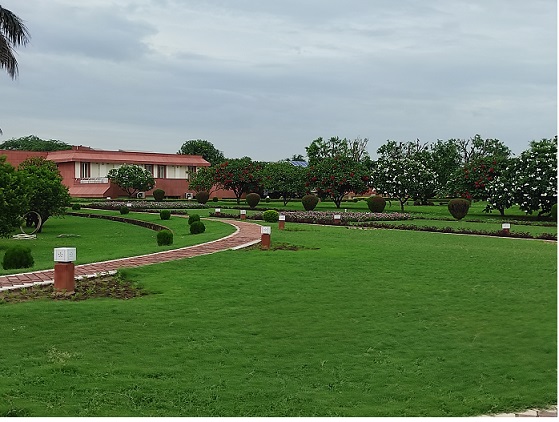
Also Read: Dancing Shiva of Chidambaram: Where science meets spirituality
Travel Tips
Location Address: Lotus Temple Rd, Bahapur, Shambhu Dayal Bagh, Kalkaji, New Delhi, Delhi 110019
Entry fee: You do not need to pay any entry free to visit the iconic Lotus Temple.
Visiting time: All days of the week except Monday: October-March: 9:30 AM – 5:30 PM, April-September: 9:30 AM – 7:00 PM
How to reach: The nearest metro station to Lotus Temple is Kalkaji Mandir Metro Station on the violet line route.Lotus Temple is just a few hundreds metres walk from here. Moreover, it is well-connected by public transportation and road networks, so you can get here by bus or taxi.
Best time to visit: The Lotus Temple is best visited during the winter and spring months of October to March, as the scorching heat of summers is not ideal for sightseeing in Delhi. It is also not a good idea to visit the monument during the monsoon months from July to September.
Time required to visit: You can spend as much time as you want at the Lotus Temple premise. But to have a good look and understanding of things, you need at least 2 hours to explore the monument.

